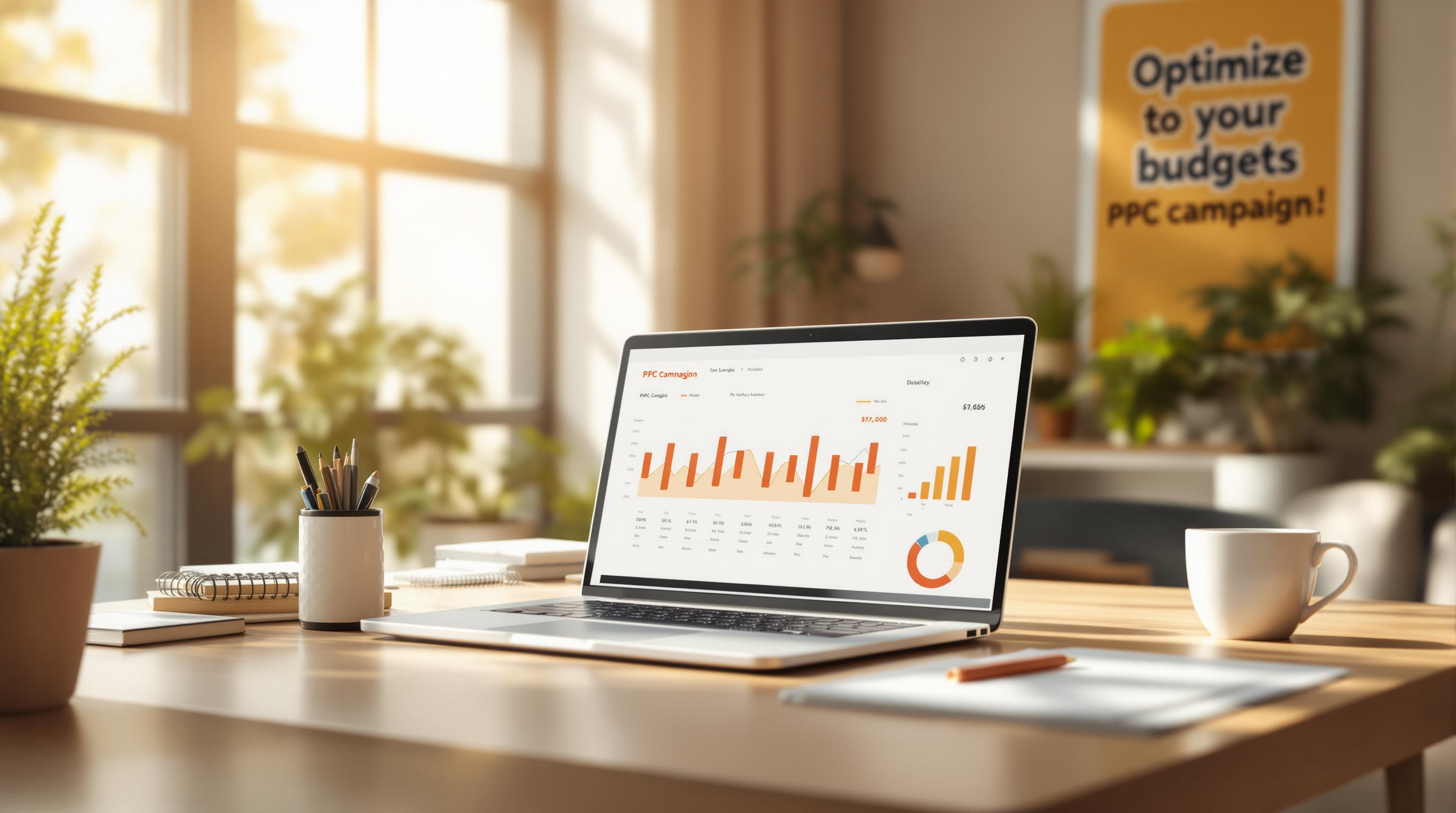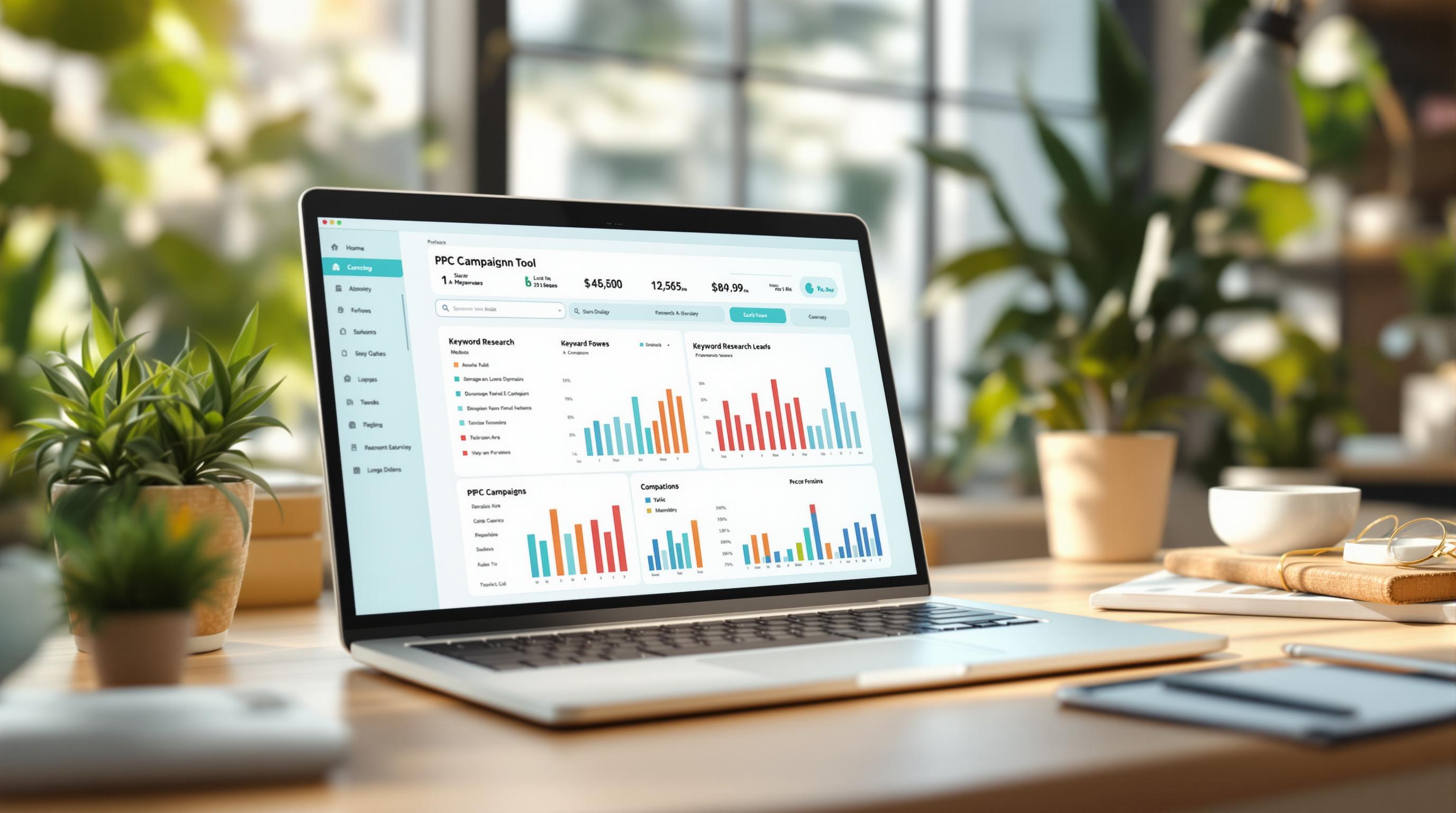Google Ads Promotion Extensions allow you to highlight discounts, sales, and special offers directly in your search ads, making it easier to attract attention and drive clicks. Here's everything you need to know:
- What They Are: Add-ons for ads that showcase deals like percentage discounts, promo codes, and valid dates.
- Why Use Them:
- Boost ad visibility and click-through rates (CTR).
- Improve ad rank and lower cost per click (CPC).
- Help your ads stand out in competitive industries like retail and travel.
- How to Set Them Up:
- Go to the "Ads & Extensions" section in Google Ads.
- Add details like promotion type, discount, duration, and landing page URL.
- Best Practices:
- Schedule promotions for holidays or flash sales.
- Pair with other extensions like sitelinks or callouts.
- Test different offers and monitor key metrics like CTR and ROAS.
Promotion extensions save time, improve campaign performance, and integrate seamlessly with other ad strategies. Start using them to make your ads more effective and appealing to potential customers.
Promotion Extensions Google Ads Tutorial

Setting Up Google Ads Promotion Extensions
Now that you know why promotion extensions are helpful, let’s dive into how to set them up step by step.
Locating the Extensions Tab
Start by heading to the 'Ads & Extensions' section in your Google Ads account. From there, select 'Promotion Extensions.' This is where you’ll see any existing extensions and have the option to create new ones.
Adding Promotion Details
When setting up your promotion extension, you’ll need to fill in some important fields:
| Field | What To Include |
|---|---|
| Promotion Type | Choose the type of discount (e.g., percentage or fixed amount). |
| Discount Details | Specify the exact discount amount. |
| Duration | Set the start and end dates for your promotion. |
| Occasion Tag | Optionally, tag events like holidays or special sales. |
| Landing Page URL | Add a direct link to the relevant promotion page. |
Assigning Extensions to Campaigns or Ad Groups
You can apply promotion extensions at different levels: account, campaign, or ad group. Choose the level that best matches your targeting strategy. Make sure your extensions align with your campaign goals to get the best results [3] [4].
Once your promotion extensions are live, you can focus on fine-tuning their performance using proven strategies.
Best Practices for Google Ads Promotion Extensions
Scheduling Promotions
Timing your promotion extensions well can have a big impact on your campaign's performance. Use a promotion calendar to align them with key shopping periods and seasonal trends:
| Timing | Extension Strategy |
|---|---|
| Holidays and Seasonal Events | Schedule extensions 2-3 weeks before major holidays or industry-specific occasions |
| Flash Sales | Set exact start and end times to create urgency |
| Off-Peak Hours | Test offers during slower periods (e.g., late evenings for retail, weekdays for travel) |
Once you've set the timing, make sure your extensions work smoothly with your ad copy for the best results.
Integrating Extensions with Ad Copy
Promotion extensions should reinforce your ad's main message and create a compelling offer:
- Primary Ad Copy: Focus on highlighting product benefits while leaving discount details to the extension. For instance, if your extension says "20% Off Winter Boots", your ad copy could emphasize features like "Premium Quality Winter Boots - Waterproof & Durable" [1].
- Value Proposition: Avoid repeating the discount in the main ad text. Instead, use the ad copy to showcase other reasons why your product or service stands out [2].
Testing and Adjusting Extensions
To get the most out of your promotion extensions, regular testing and tweaking are essential. Here’s how you can approach it:
- Format Testing: Experiment with different discount styles (percentage vs. fixed amount) and promotion types (seasonal sales, holiday specials). Also, test various landing page setups to see what resonates most.
- Performance Monitoring: Keep an eye on metrics like CTR, conversion rate, ROAS, and extension impression share (how often your extensions show up when eligible) to identify what’s working and what needs improvement [1][2].
Advanced Techniques for Google Ads Promotion Extensions
Combining Promotion Extensions with Other Extensions
To make your ads more effective, combine different types of extensions strategically. Here's how you can mix and match:
| Extension Combination | Purpose | Example |
|---|---|---|
| Promotion + Sitelinks | Highlight discounts while guiding users to specific pages | Promotion: "20% Off Winter Collection"; Sitelinks: "Women's Boots", "Men's Jackets", "Kids' Wear" |
| Promotion + Callouts | Add value-focused messaging alongside offers | Promotion: "Free Shipping on $50+"; Callouts: "24/7 Support", "30-Day Returns" |
| Promotion + Structured Snippets | Show product categories along with discounts | Promotion: "15% Student Discount"; Snippets: "Textbooks", "Study Guides", "School Supplies" |
Once you've layered your extensions effectively, consider using dynamic promotion extensions to automate and refine your approach.
Using Dynamic Promotion Extensions
Dynamic promotion extensions can save time by automatically adjusting offers based on triggers like time, location, or inventory [1].
How to Use Them:
- Set up automated promotions tied to specific triggers, such as seasonal sales or stock availability.
- Create campaigns that adapt to real-time factors like location or time of day.
This automation helps you stay relevant and ensures your offers align with user behavior.
Monitoring Extension Performance
To ensure your promotion extensions are working, keep a close eye on key metrics [2].
What to Track:
- Extension impression share: See how often your extensions appear.
- CTR and conversion rates: Understand how well your ads are engaging users.
- Return on ad spend (ROAS): Measure profitability from your campaigns.
Tracking these metrics regularly allows you to fine-tune your approach and improve results over time [3].
"The key to successful promotion extensions lies in regular performance monitoring and optimization. By analyzing metrics such as CTR, conversion rate, and ROAS, advertisers can make data-driven decisions to improve their campaigns' effectiveness." [1]
sbb-itb-89b8f36
Troubleshooting and Improving Promotion Extensions
Why Extensions Might Not Show Up
Sometimes, your promotion extensions may not appear as expected. Here's a quick breakdown of common issues and how to address them:
| Problem | Solution | Why It Matters |
|---|---|---|
| Policy Compliance | Ensure your content follows Google Ads rules | Avoids disapprovals and keeps your extensions live |
Also, watch out for time zone differences when scheduling promotions. Misaligned schedules can lead to missed visibility opportunities.
Once you've tackled these visibility problems, shift your focus to improving performance by analyzing the data.
How to Use Data to Optimize Extensions
Data is your best ally when it comes to fine-tuning promotion extensions. Here’s what to focus on:
Key Metrics to Track:
- Click-Through Rate (CTR) and conversion rates for both promotional and non-promotional ads
- Cost per conversion across various offers
Using Data to Improve:
Look for trends in user behavior. For example, if free shipping consistently outperforms percentage discounts, adjust your strategy to emphasize that offer.
Experimenting with Promotions:
- Test different types of promotions and occasions to find what resonates most with your audience.
- Use metrics like CTR and Return on Ad Spend (ROAS) to pinpoint underperforming extensions and tweak your offers accordingly.
For more tools and tips, check out the Top PPC Marketing Directory at https://ppcmarketinghub.com. It’s a handy resource for boosting your promotion extension performance.
Weekly Optimization Routine: Make it a habit to review impression share, conversion rates, and messaging every week. Pause or adjust any extensions that aren’t delivering results.
Additional Resources for PPC Campaign Success
When working on your promotion extensions, having the right tools and resources can make a big difference in your campaign's performance.
The Top PPC Marketing Directory is a go-to platform for finding tools and services tailored to improving promotion extension results. It features resources for tasks like bid management, automation, and performance tracking - helping you simplify workflows and boost your campaign outcomes.
Here’s what the directory can help you with:
- Simplified campaign management for promotion extensions
- Better tracking and performance insights
- Access to tools for testing extensions
- Seamless integration with your current workflows
The directory keeps its listings up-to-date with tools specifically aimed at improving promotion extension performance. Whether you’re handling one campaign or juggling multiple ad groups, these resources can help you make smarter, data-backed decisions.
Using these tools, you’ll be in a stronger position to fine-tune your promotion extensions and get more out of your PPC campaigns.
Conclusion
Google Ads promotion extensions can significantly boost campaign performance by grabbing attention, sparking urgency, and encouraging action at key points in the customer journey. These extensions highlight offers in a way that immediately appeals to potential customers.
To make the most of promotion extensions, focus on these key factors:
- Smart Timing: Schedule promotions during peak shopping seasons or around major events.
- Consistent Messaging: Match the tone and content of your extensions with your main ad copy.
- Regular Tracking: Keep an eye on metrics to fine-tune and improve performance.
- Extension Pairing: Combine promotion extensions with other types to amplify results.
For businesses aiming to get the best outcomes, tools like the Top PPC Marketing Directory provide helpful resources for refining extension strategies and managing campaigns efficiently.
Promotion extensions aren’t just extra features - they can play a central role in your PPC strategy. When used alongside the advanced tips and fixes discussed earlier, they can elevate your campaign's performance. Integrated into a broader marketing plan, these extensions help deliver stronger results for your business.
If you’re looking for more tips on using promotion extensions, check out the FAQs below.
FAQs
Here are answers to common questions about promotion extensions, along with tips for using them effectively.
How do I add a promotion extension to Google Ads?
Setting up a promotion extension is straightforward:
- Go to the 'Ads & Extensions' section in Google Ads.
- Select 'Extensions' from the middle menu.
- Click the + button and choose 'Promotion extension'.
- Pick an occasion (if applicable) for your promotion.
- Fill in the details, such as promo codes or minimum spend requirements.
Double-check your settings to ensure the promotion displays correctly.
What are promotion extensions for Google Ads?
Promotion extensions let you:
- Showcase discounts, either as a percentage or a specific amount.
- Include promo codes and spending conditions.
- Highlight limited-time offers to create urgency.
- Make deals stand out directly below your ad text.
For example, phrases like “20% Off Winter Gear” or “$50 Off Orders Over $200” can grab attention and drive clicks.
"Google Ads promotion extensions are a type of ad extension that allows advertisers to include special offers, discounts, or promotions in their ads. They benefit advertisers by increasing ad visibility, click-through rates, and conversions by highlighting valuable deals to potential customers." [1]
To get the best results, align your promotion extensions with your campaign objectives. Combine them with other ad extensions and use Google Ads analytics to track performance and make adjustments as needed.


